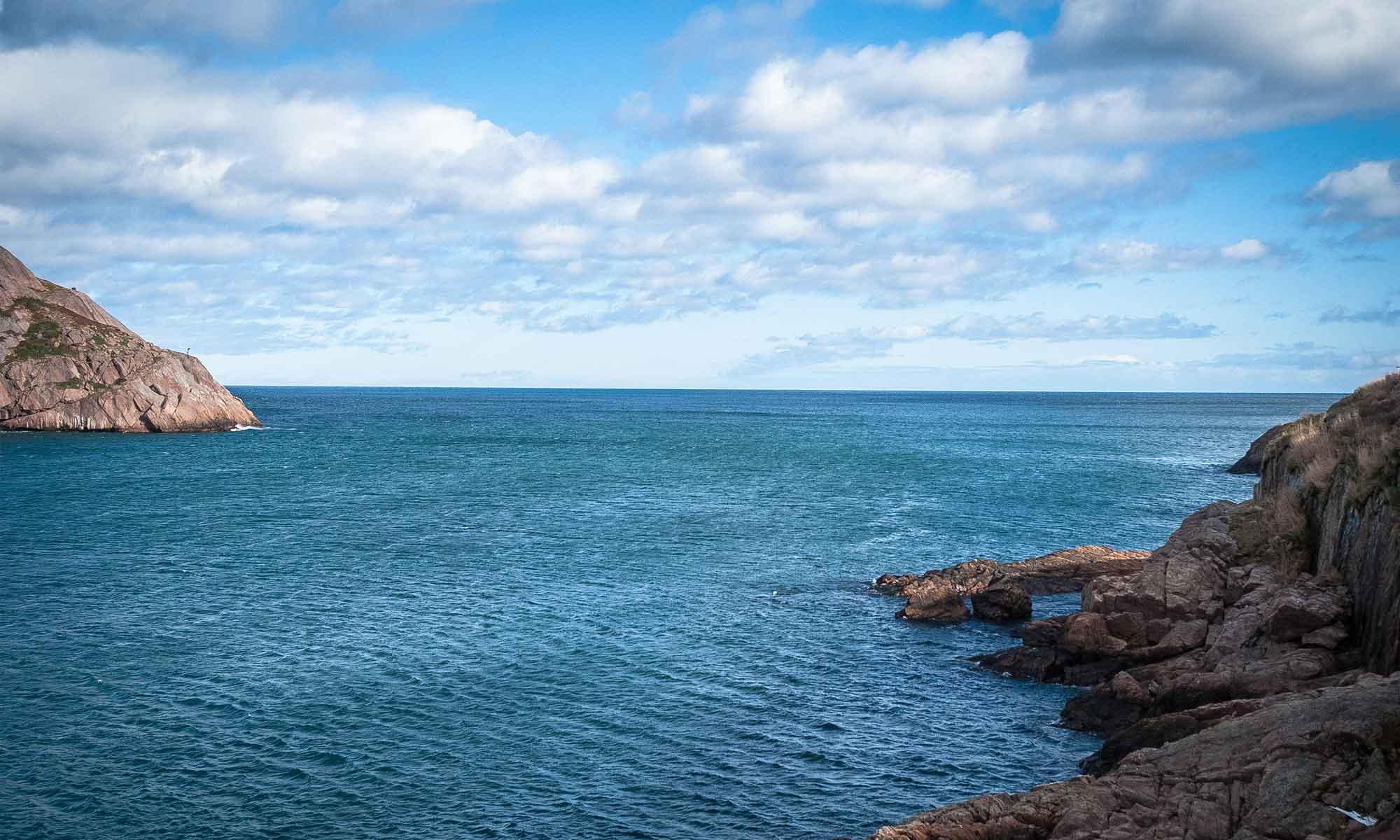The Ships Of The Atlantic Charter
After two years of war, by the summer of 1941 Great Britain and its dominions, including Newfoundland and Canada, were alone in resisting the advance of Hitler’s German war machine in western Europe. Essential marine supply convoys from North America were being picked off by enemy submarines and the British urgently needed strong allies to survive and defeat the Nazi menace. Most obvious was the powerful United States which had not yet entered World War II. So desperate was the situation that a secret meeting was staged that August between leaders of both nations, British Prime Minister Winston Churchill and U.S. President Franklin Roosevelt.
The location chosen was the island of Newfoundland. Deep in a protected arm of Placentia Bay naval vessels of both countries brought the leaders for a three-day meeting. It was the forerunner of the Grand Alliance that eventually led to Allied victory in the war.
Today, that place is a peaceful anchorage. A few small fishing boats come and go out of Fox and Ship Harbours beneath the towering dark green hills. The Marine Atlantic ferry can be seen arriving at Argentia on the flat peninsula to the south. Oil tankers steam to and from Whiffen Head and Come By Chance. But the massive and formidable warships and their escort vessels that dominated the bay in August, 1941, are now but a memory, surviving only in black and white photos from the U.S. Navy’s historical archives several of which are shown on this page.
Churchill was brought across the North Atlantic aboard the brand new battleship HMS Prince of Wales. Roosevelt came north up the Atlantic coast aboard the heavy cruiser USS Augusta. One ship survived less than a year, the other nearly 30 years. Both were very active in the war at sea.
Prince of Wales was a modern battleship displacing 35,000 tons and fitted with the most effective heavy duty armament of her day. Her troubles actually began while she was being built at Birkenhead where she sustained minor damage in a German air attack. Completed in March, 1941, Prince of Wales was still working up to operational status when she was sent for her baptism of fire in the famous chase of the doomed German battleship Bismarck, considered the most powerful warship afloat at the time. The British ship received major damage in the battle but was quickly repaired and made ready for her next important task, bringing Churchill to Newfoundland in August.
After that, on returning to Britain she was sent to the Mediterranean where she fought off Italian air raids at the island of Malta in late September. Back home again, she was designated flagship of the commander-in-chief of Britain’s Eastern Fleet and on Oct. 25 began steaming half-way around the world with the battlecruiser HMS Repulse to counter rising Japanese aggression in the Pacific.
The ships arrived at Singapore on Dec. 2, and on the 8th — the same day the U.S. was attacked at Pearl Harbor and thus entered the war — they were sent to repel a Japanese invasion force in northern Malaya but could not find the enemy. The fleet had only destroyer escorts, no aircraft cover. The result was that, as they returned to Singapore, both Repulse and Prince of Wales were sunk on the morning of Dec.10 by Japanese torpedo planes. Adding this loss to the Pearl Harbor attack two days previously, the Allies were deeply shocked.
The mighty Prince of Wales had been in service only eight months but in that time had performed in three theatres of war and had served one of the most important meetings of the entire conflict, the planning of the Atlantic Charter in Newfoundland.
The USS Augusta was older and, at 9,050 tons, much smaller than the British battleship. Commissioned in 1931 at Newport News, Virginia, she served first in the Atlantic and Caribbean. In 1932 she was sent to the Pacific as flagship of the U.S. Asiatic Fleet. The Augusta spent seven years there, latterly protecting U.S. interests in the burgeoning war between Japan and China, and was accidentally damaged by Chinese forces while off Shanghai. She returned home in 1940 for extensive refit, and the following spring steamed through the Panama Canal to become flagship of the U.S. Atlantic Fleet.
She served in that role for two years, bringing the President to the Atlantic Charter meeting and then commanding various naval activities throughout the North Atlantic.
She was off Morocco in November, 1942, engaging enemy batteries and warships during the U.S. invasion there. She served with the British Home Fleet in 1943, and took active part in the invasions of France in 1944. As the war in Europe ended in 1945, the Augusta again served as a carrier of “very important persons.” This time she took President Harry Truman across the Atlantic to and from the Potsdam Conference which effectively tied up the loose ends of the war in Europe.
After transporting service personnel back home from Europe for the balance of 1945, the Augusta was retired in 1946 and joined the reserve fleet at Philadelphia for the next 13 years. In November, 1959, after 28 years of naval service the heavy cruiser was sold for scrap.
You can drive to the shore at Ship Harbour today and, from a tidy little park built and maintained by a dedicated local historical group with help from U.S. Navy veterans, you can look out at those bays and imagine what it was like with the two massive warships anchored there, smaller destroyers patrolling out into Placentia Bay, and fleets of tiny naval craft chuffing back and forth among the ships. And, aboard the HMS Prince of Wales, Churchill and Roosevelt about to change the course of history.
Photo credit: U.S. Navy historical archives
